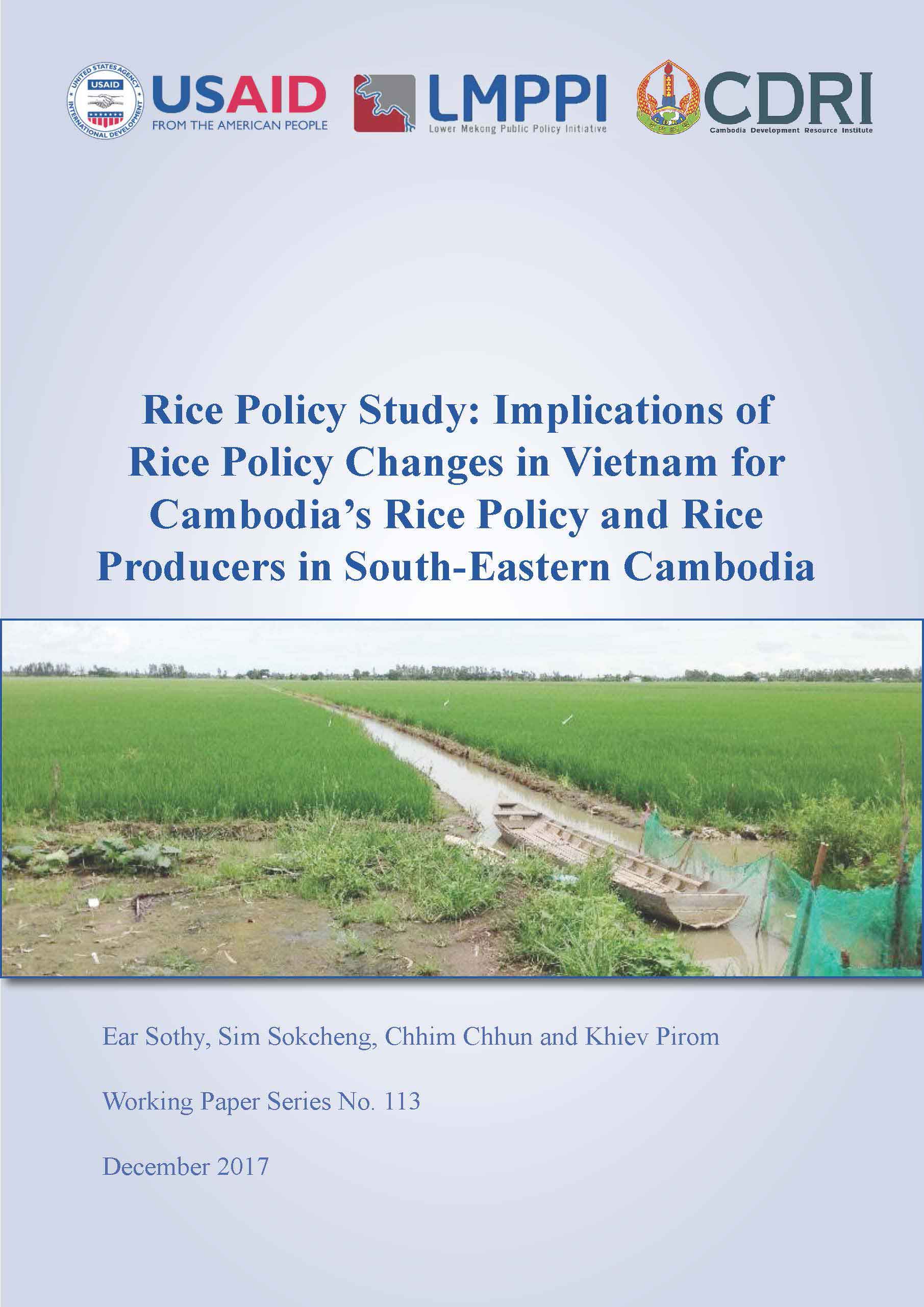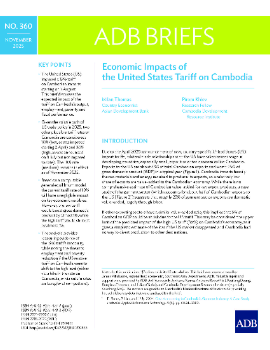
Rice Policy Study: Implications of Rice Policy Changes in Vietnam for Cambodia’s Rice Policy and Rice Producers in South-Eastern Cambodia
Keyword: Rice policy, rice producers, agriculture, Cambodia, Vietnam
Khmer PDF (59)
Abstract/Summary
There are many studies about rice production in Cambodia, but none focus on the geographical location of rice production, particularly in the south-eastern provinces of Prey Veng, Takeo and Svay Rieng. Farmers in these areas produce mainly low-value rice (IR504) most of which is exported as wet paddy to Vietnam. The Vietnamese government recently decided to restructure its economic and agricultural policy by shifting from low-value rice to high-value rice and other agricultural crops. It is strongly believed that this policy shift will have severe impacts on rice production in Cambodia, especially on farmer livelihoods in the south-eastern provinces. This paper explores the implications of rice policy changes in Vietnam for rice production and rural household incomes in the eastern and southern areas of Cambodia near the Vietnam border. Interviews, focus group discussions and a household survey revealed that it will take Vietnam at least three years to implement its restructured policy fully. So, in the near term, Vietnamese traders and exporters will continue purchasing paddy from Cambodia if there is still a market for low-value rice. For some 20 percent of the surveyed households, more than half of their income comes from rice farming. This population will be severely affected if Vietnamese traders stop buying their rice. Rice cultivation was reportedly the main occupation of most of the surveyed households, yet off-farm employment was their main source of income, accounting for about 35 percent of the total. Interviews with local traders found that due to limited processing capacity, local millers would be unable to absorb leftover paddy if there were a demand shock from Vietnam.



